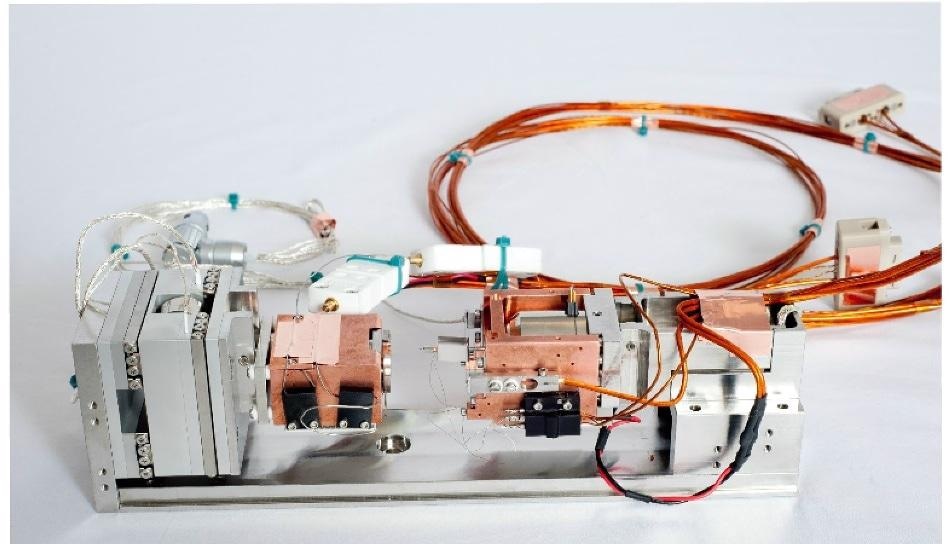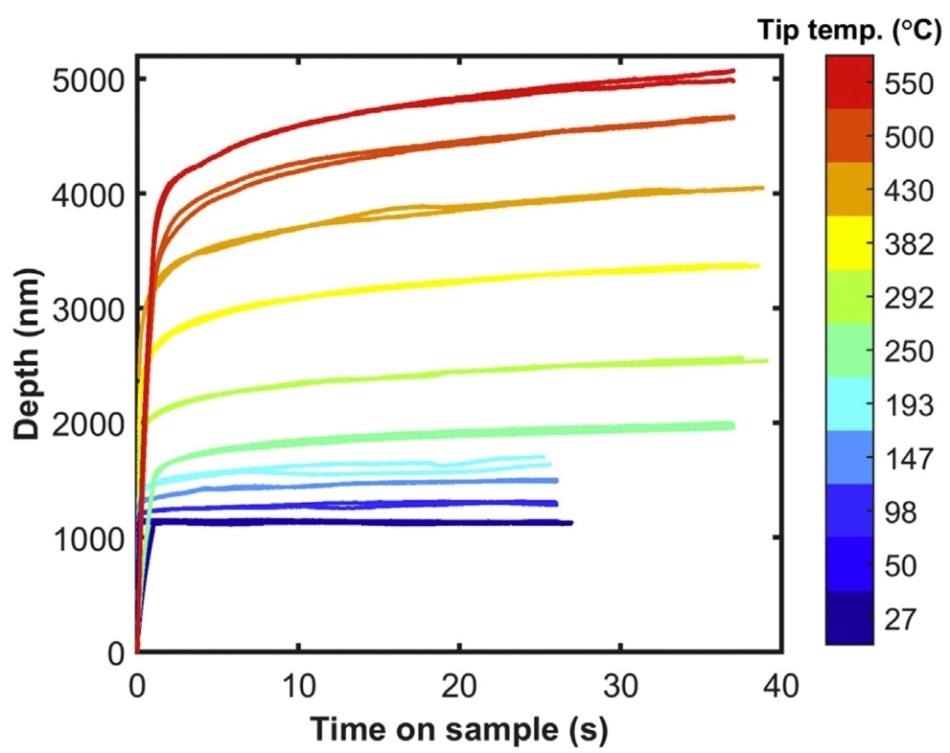Nanoindentation creep testing of Aluminium 1100 is performed using the HT InSEM system from Nanomechanics, Inc. The HT InSEM permits the tip and the sample to be heated separately so that testing can be done under isothermal conditions. Experiments prove that using nanoindentation testing gives excellent measurements for creep properties along one axis, in conformity with those derived from conventional creep tests. The InSEM system can be incorporated into the majority of electron microscope vacuum chambers in use for in situ testing.

Figure 1. The InSEM HT system available from Nanomechanics, Inc. The system integrates into most electron microscope vacuum chambers for in-situ examinations at temperature.

Figure 2. Depth-Time curves measured at different temperatures for a fixed load. Significant creep was observed starting at ~200 °C.
The results obtained in the present experiment were plotted on depth-time curves at different temperatures keeping the load constant, and creep was observed to begin in the test sample at -200° C.

Figure 3. Nanoindentation creep measurements converted to uniaxial results and directly compared to traditional uniaxial test measurements. Excellent agreement was found between the two test testing techniques, noting that nanoindentation results were performed at a fraction of the cost, time, and material required by the uniaxial testing.
When presented as uniaxial results, a comparison with those of traditional testing on one axis showed a high degree of agreement, while the cost, time taken and amount of material required was much lower with the use of nanoindentation.

This information has been sourced, reviewed and adapted from materials provided by Nanomechanics, Inc.
For more information on this source, please visit Nanomechanics, Inc.